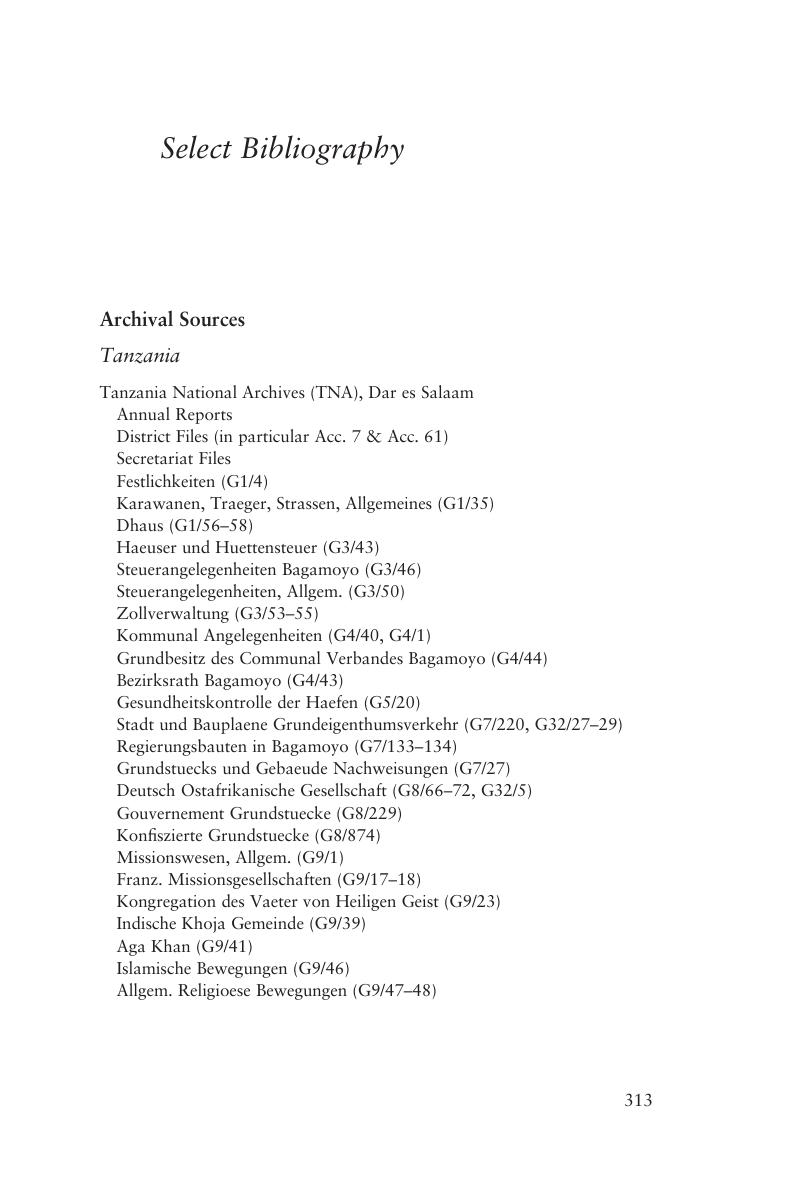Book contents
- Making Identity on the Swahili Coast
- African Identities: Past and Present
- Making Identity on the Swahili Coast
- Copyright page
- Dedication
- Contents
- Illustrations
- Preface
- A Note on Spellings and Currency
- A Note on Nomenclature
- Abbreviations
- Maps
- Introduction
- Part One Becoming Bagamoyo
- Part Two Fitting into their Way of Life: Local Community and Colonial Control
- Epilogue
- Glossary
- Select Bibliography
- Index
- References
Select Bibliography
Published online by Cambridge University Press: 28 October 2019
- Making Identity on the Swahili Coast
- African Identities: Past and Present
- Making Identity on the Swahili Coast
- Copyright page
- Dedication
- Contents
- Illustrations
- Preface
- A Note on Spellings and Currency
- A Note on Nomenclature
- Abbreviations
- Maps
- Introduction
- Part One Becoming Bagamoyo
- Part Two Fitting into their Way of Life: Local Community and Colonial Control
- Epilogue
- Glossary
- Select Bibliography
- Index
- References
Summary

- Type
- Chapter
- Information
- Making Identity on the Swahili CoastUrban Life, Community, and Belonging in Bagamoyo, pp. 313 - 337Publisher: Cambridge University PressPrint publication year: 2019

